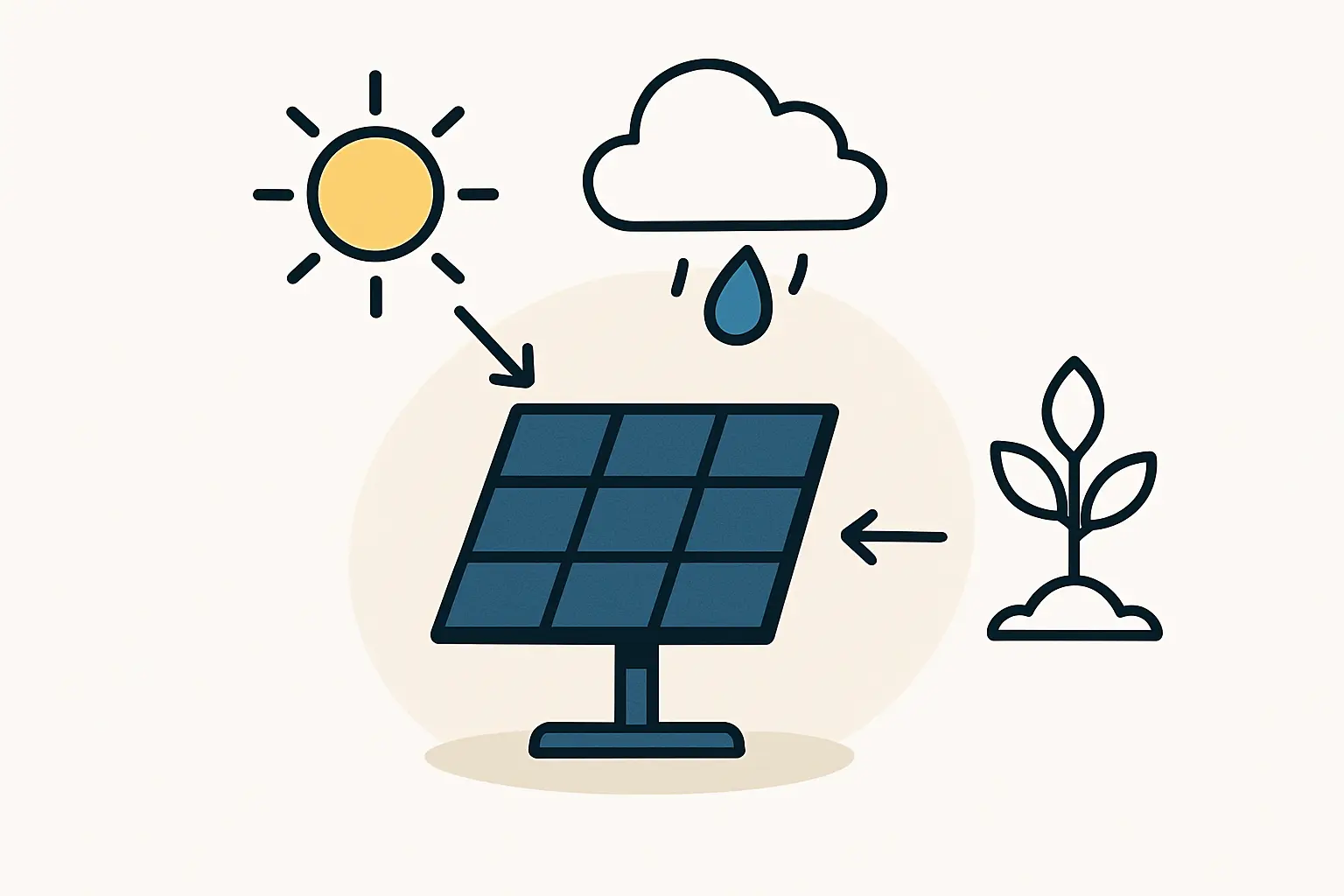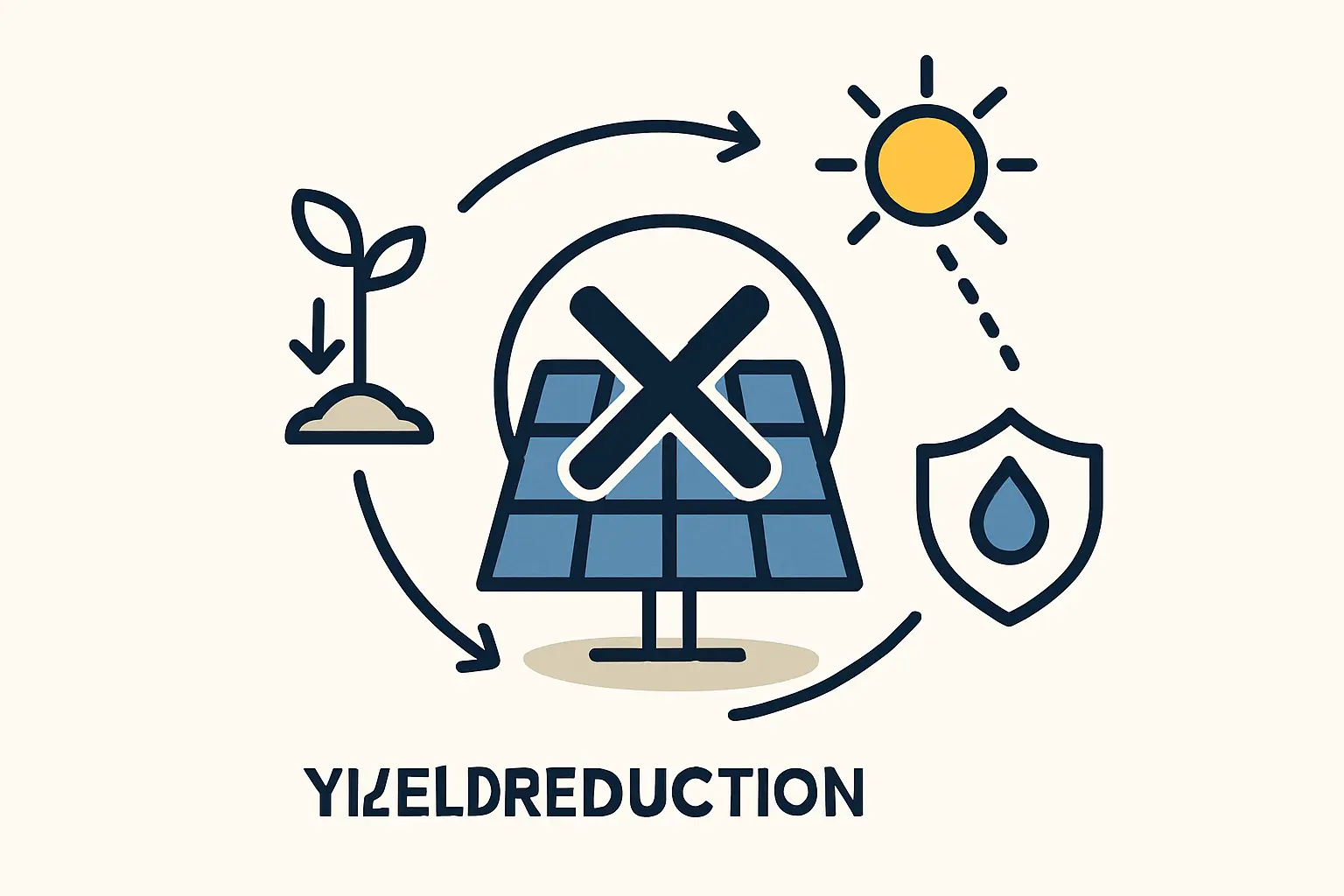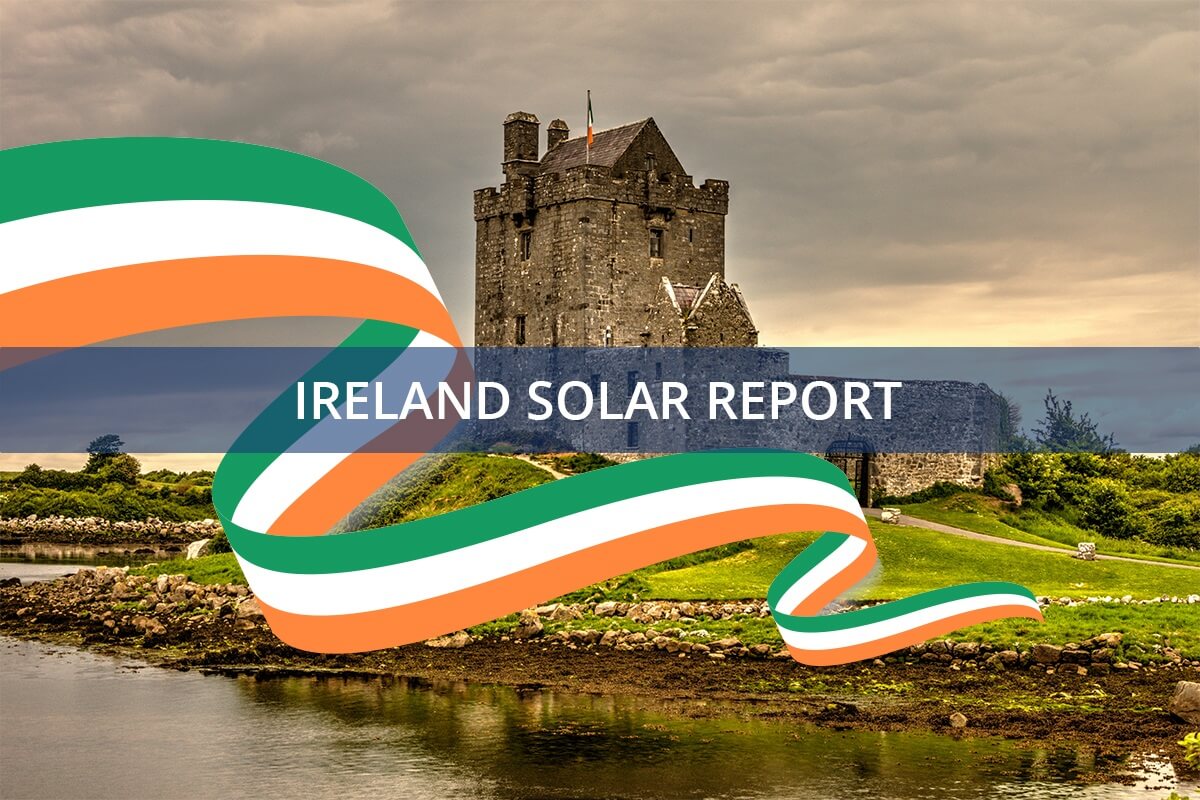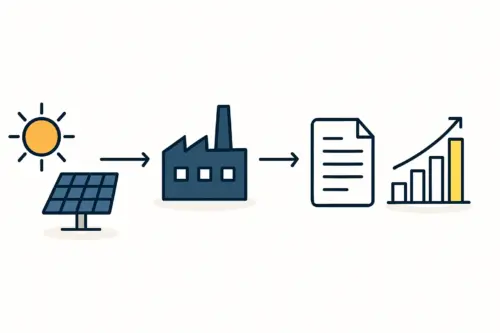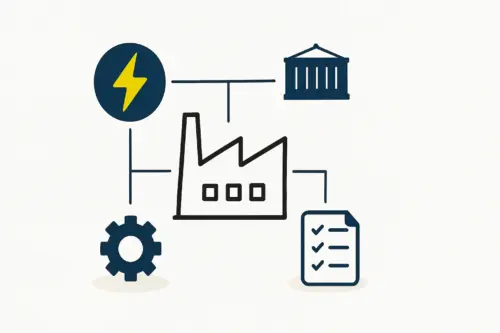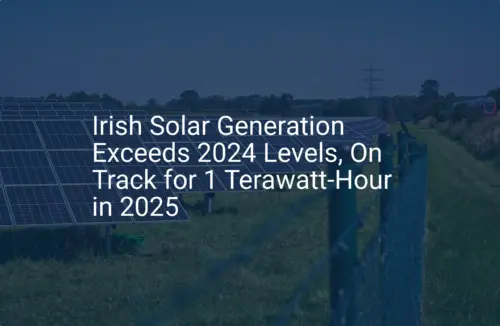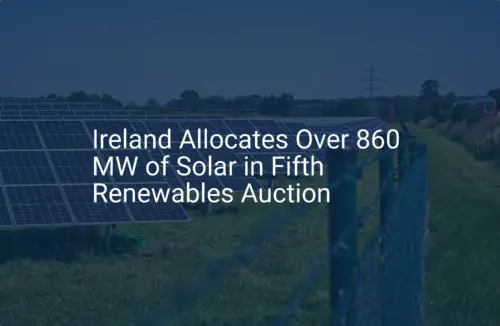Solar energy might not seem like a major opportunity in a country known for its green landscapes and frequent rainfall. Yet, Ireland has set an ambitious goal of installing 8 gigawatts (GW) of solar capacity by 2030. This target presents a significant challenge: a potential conflict over land use between the nation’s vital agricultural sector and the need for large-scale solar farms.
This tension between farming and energy production, however, creates a sophisticated and potentially lucrative business opportunity. The solution isn’t to choose one over the other, but to combine them through Agrivoltaics (Agri-PV). More specifically, this situation presents a compelling case for manufacturing specialized solar modules engineered precisely for Ireland’s unique climate and agricultural needs—a niche that large, international manufacturers often overlook.
The Convergence of Farming and Energy: What is Agrivoltaics?
Agrivoltaics is the practice of using the same parcel of land for both solar photovoltaic power generation and agriculture. Instead of covering fields with conventional, ground-mounted solar panels that prevent farming, Agri-PV systems are designed to coexist with crops or livestock. This can be achieved through solutions like:
- Elevated Structures: Panels are mounted high enough for machinery and animals to pass underneath.
- Spaced Layouts: Panels are arranged with gaps to allow sufficient sunlight to reach crops.
- Vertical Installations: Bifacial (two-sided) panels are installed vertically, allowing land to be farmed on both sides.
Ireland’s agri-food sector contributes over €13 billion in exports and supports nearly 165,000 jobs. Protecting its agricultural land, therefore, isn’t just a preference—it’s an economic necessity. Agri-PV offers a path to achieving national energy goals without compromising this foundational industry.
Why Standard Solar Modules Fall Short in the Irish Context
Most of the world’s solar modules are mass-produced for climates with high solar irradiation—think sunny, arid regions. Importing these standard modules for Irish Agri-PV applications comes with several distinct disadvantages. A “one-size-fits-all” approach fails to address the specific environmental and agricultural demands of the region.
The primary challenges include:
- Low and Diffuse Light: Ireland experiences significant cloud cover, meaning a high proportion of sunlight is diffuse rather than direct. Modules optimized for direct, intense sunlight will underperform.
- High Humidity and Rainfall: Constant moisture creates a high risk of water ingress, which can lead to rapid degradation, corrosion, and a reduced module lifespan. This is a critical point of failure for panels not built to withstand such conditions.
- Mechanical Stress: The region is subject to strong winds, placing significant mechanical stress on module frames, glass, and mounting structures.
An entrepreneur considering this market will find that simply assembling standard panels isn’t enough. The real opportunity is in producing a product specifically engineered to thrive in these challenging conditions.
The Profile of a Climate-Specific Agri-PV Module
Manufacturing solar modules tailored for the Irish climate involves specific technical choices that differentiate the product from commodity panels. This specialization is the cornerstone of the business case.
Superior Performance in Low Light
Success in a low-light environment depends on maximizing the energy harvest from every available photon. This requires module technology that excels in overcast conditions, such as specific cell technologies (e.g., N-type TOPCon or HJT) that have a better response to diffuse light and a lower temperature coefficient, ensuring more consistent output throughout the year.
Ready to make big Profits?
The solar Industry is Booming
WE HELP NEWCOMERS to the solar industry start their own solar module production line. Customers can make BIG PROFITS by selling modules and finding investors, without wasting money and time on things they don't need!
Built for Durability and Longevity
To withstand decades of wind and rain, these modules must be exceptionally robust. This is less about the solar cells themselves and more about their protection.
- Advanced Encapsulation: Using Polyolefin Elastomer (POE) instead of the more common Ethyl Vinyl Acetate (EVA) as an encapsulant offers superior resistance to moisture penetration, preventing long-term degradation. A deep understanding of solar panel components is essential for making these critical design choices.
- Robust Framing and Sealing: A thicker, more durable frame combined with high-quality edge sealing is non-negotiable to prevent delamination and internal corrosion caused by the humid climate.
Optimized for Dual-Use Applications
Beyond weather resistance, the modules must be designed for agricultural synergy.
-
Vertical Bifacial for Pastures: For livestock grazing, vertically mounted bifacial modules are an ideal solution. They capture direct sunlight in the morning and evening and diffuse light throughout the day on both sides. This layout leaves over 95% of the land free for grazing and machinery, minimizing the impact on farm operations.
-
Semi-Transparent for Horticulture: For crops that benefit from shading and protection from heavy rain, semi-transparent or custom-spaced modules can act like a dynamic greenhouse. They reduce water evaporation, protect plants from stress, and can even extend the growing season—all while generating electricity.
The Business Opportunity: A Case for Local Manufacturing
A local manufacturing facility focused on these specialized modules holds several strategic advantages over relying on imports.
- Niche Market Leadership: The business would not compete with massive, low-cost commodity producers. Instead, it would serve a specific, high-value niche with a superior, purpose-built product.
- Supply Chain Resilience: A local factory reduces lead times, shipping costs, and the vulnerabilities of global supply chains. This is a significant advantage for project developers working on tight schedules.
- Customization and Trust: A local manufacturer can work directly with agricultural cooperatives, farm owners, and energy developers to design modules tailored to specific crops or land types, building strong customer relationships based on expertise and responsiveness.
Economic Benefits for the End-User
For farmers, adopting locally produced Agri-PV systems unlocks two revenue streams from the same piece of land: one from agriculture and one from energy generation. This diversifies their income, provides a hedge against commodity price fluctuations, and increases the overall productivity and profitability of their land.
Structuring the Investment
Establishing a factory to produce these specialized modules requires careful planning. The initial investment would focus on a production line capable of handling advanced materials like POE and manufacturing robust, bifacial modules. An effective solar module manufacturing business plan is the first step, outlining capital requirements, operational costs, and market strategy.
For entrepreneurs new to the industry, sourcing and integrating the right equipment can be a complex undertaking. Engaging with a partner who can deliver a turnkey solar manufacturing line configured for these specific requirements can significantly de-risk the project and accelerate time to market. Based on experience from J.v.G. Technology GmbH turnkey projects, a semi-automated line for such specialized modules can be established with a manageable footprint and workforce.
Frequently Asked Questions (FAQ)
What is the main advantage of Agri-PV over a conventional solar farm?
The primary advantage is land-use efficiency. Agri-PV allows for both food and energy production on the same land, resolving land-use conflicts, preserving agricultural activity, and creating dual income streams for farmers.
Are specialized Agri-PV modules more expensive to manufacture?
They may have a higher upfront manufacturing cost due to more durable materials (like POE encapsulants or stronger frames). However, this cost is justified by a longer operational lifespan, higher energy yield in local conditions, and greater reliability, resulting in a lower Levelized Cost of Energy (LCOE) over the project’s lifetime.
How does bifacial technology work in a low-light climate like Ireland?
Bifacial panels produce energy from both sides. In Ireland, the rear side of a vertical module captures a significant amount of diffuse and reflected light from clouds and the ground, especially during the long daylight hours of summer. This boosts total energy production compared to a single-sided panel.
What kind of land is most suitable for Agri-PV in Ireland?
Pastures for grazing sheep or cattle are ideal for vertical bifacial installations. Land used for horticulture (e.g., growing fruits and vegetables) can benefit from elevated, semi-transparent solar arrays that provide shade and protection.
From Concept to Production: The Path Forward
The convergence of Ireland’s ambitious climate goals and its strong agricultural heritage creates a clear, identifiable market for specialized Agri-PV modules. This case study demonstrates a powerful lesson for entrepreneurs globally: the greatest opportunities in the solar industry often lie not in mass-market competition, but in identifying and serving a specific regional or technical need with a superior, purpose-built product.
For business professionals looking to enter solar manufacturing, the next step is to deepen their understanding of the technical and financial requirements. Educational resources, such as the structured e-courses provided by pvknowhow.com, can offer a clear roadmap for navigating the complexities of factory planning, equipment selection, and market entry.

